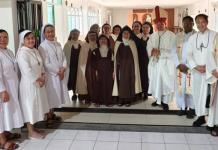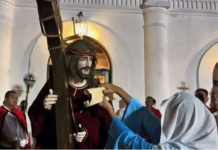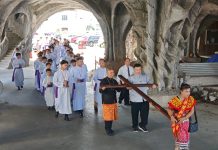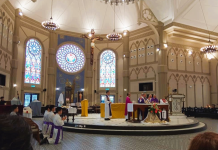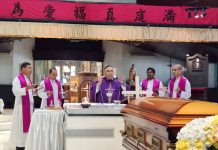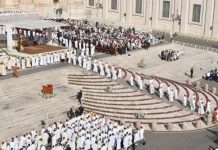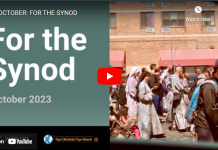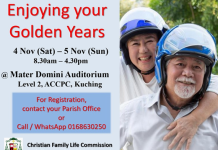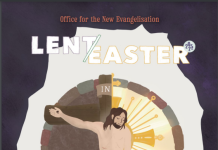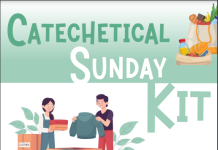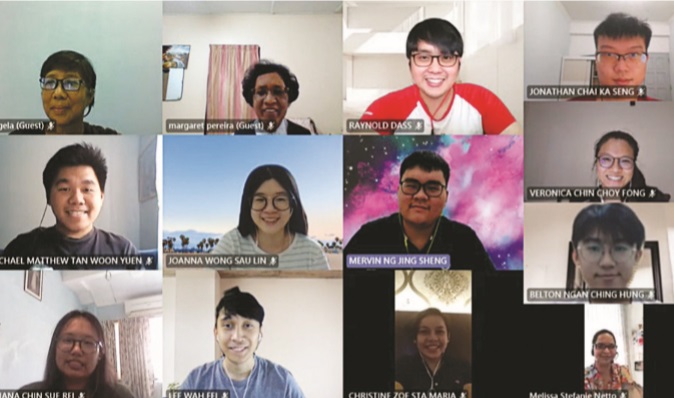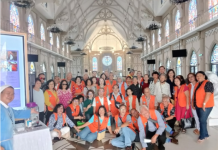KUALA LUMPUR — On March 19, the Catholic Students Society of UTAR organised a virtual talk via Microsoft Teams on The Lenten Season & Easter with Sr Margaret Pereira Rgs and Ms Angela Ong.
It began with Lent’s origin, meaning and practices. The 40 symbolises wholeness or completeness, as it was when Jesus was led by the spirit into the wilderness, fasting and praying for 40 days before he starts his ministry. It also reminds us of the time Israel spent 40 years wandering in the desert after being held slaves in Egypt and had many troubles and concerns, unlike Jesus who remained faithful to God. The 40 days Jesus experienced was an act of solidarity, having empathy with the hungry and weak by giving up physical satisfaction. Which implies that fasting means being freed for the service of others. The desert was a place known to be filled with demonic spirits and temptations in the Bible. Temptations take God’s place and claim God’s power as we clearly see today in the destruction of mother nature as well as relationships in family. However, in family life, small power struggles often take place.
Previously, Lent was practiced by having one meal per day, along with abstinence and penance. Nowadays, it has evolved into fasting (act of solidarity) and restructuring the distribution of our temporal possessions. In Lent, we are given the chance to grow in Christian maturity, to be tested and to be strengthened in our relationship with God, and to mature to empower others. It is also a time of renewal and regeneration, preparation for the burst of new life at Easter, a call to conversion, meditating on the death of Jesus, and liberating us from the bonds of sin and our own death.
The participants, in groups discussed some questions that were put forth. Below is a summary of the discussion and findings:
1. What are some of the people’s reactions when they are faced with illness, suffering, or trials in life, and why do you think that they react the way they do?
People generally have negative reactions and even, in extreme situations, suicidal thoughts. They are uncertain whether they will be healthy again. They are being scared of the unknown. Furthermore, people are often anxious and feel helpless. Some may say it is overwhelming as nothing is in their control.
2. Supposing you were asked to explain the meaning of suffering and trials in life, what would your possible answers be?
It provides a chance to grow stronger internally and to follow what Jesus did in resisting difficulties and to learn to accept the situation. All this to reach a certain satisfaction when the achievement arrives.
3. What is significant about Jesus’ death and Resurrection?
It is a lesson for us — that we must try to be faithful to Him, try not to sin so much, be grateful for his death to take away all sin. The Resurrection strongly signifies that He is not under the power of Death. On the other hand, He can guide us and be with us through all our suffering and trials. With perseverance, God will guide us through all kinds of challenges and we will come out stronger.
Jesus’ Death and Resurrection The Jewish Passover marks the freedom of slavery from Egypt, but Jesus’ death and resurrection marks the beginning of the liberation of all people from the slavery of sin and death.
The Last Supper, which we know well, has the bread and wine to represent the body and blood that is, suffering and death. As the bread was broken, so will his body be broken and just as the wine was poured out, so will his blood be shed, thus estab lishing a new covenant for the forgiveness of sin.
In the Garden of Gethsemane, the suffering of Jesus includes physical, psychological, and spiritual pain. Due to His authentic love for sinners, He prays for the possibility of the betrayers transforming into people of goodness and love: a solid act of forgiveness.
The Resurrection shows Jesus being transformed into a risen state of being. The ability to have the recognition of Jesus as the Risen Lord requires faith which is why we read that believers struggled to grasp the idea in the beginning, before Pentecost. Moving on, we then talked about engaging with symbols of new life and breath in the freshness of life, which we believe would be useful not only for the youths but for people everywhere, regardless of age and gender. Small steps can go a long way.
–– Get up early to watch the break of daylight
–– Make your own mini-Easter Candle
–– Decorate freshly boiled eggs (sign of new life) for breakfast
–– Place a fresh bloom of any flower in a low vase
–– Share love and deepen relationships by reaching out to others
–– Spring decorations (special plants or blooms etc.)
–– Livestream the Easter Vigil Mass or the Easter Sunday Mass
–– Meet with your CSS members, prayer group, BEC, Youth Organisation(s), etc. and share your stories and experiences!

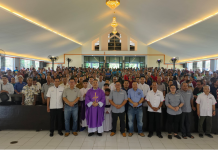
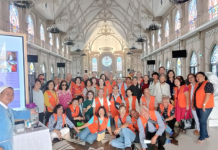


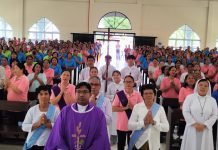


、尤金·玛格拉桑神父(Fr-Eugene-Maglasang)(前排右八)及叶祥胜神父(前排右十)于2025年1月25日在圣体堂合影。(摄影:蔡彼得).jpg)
